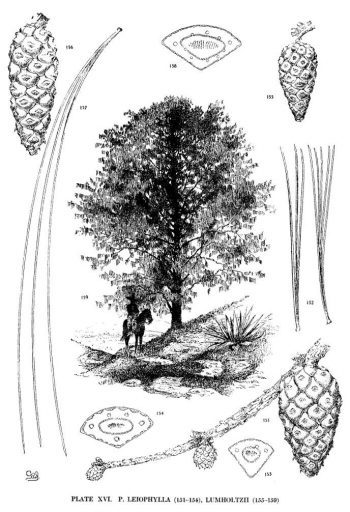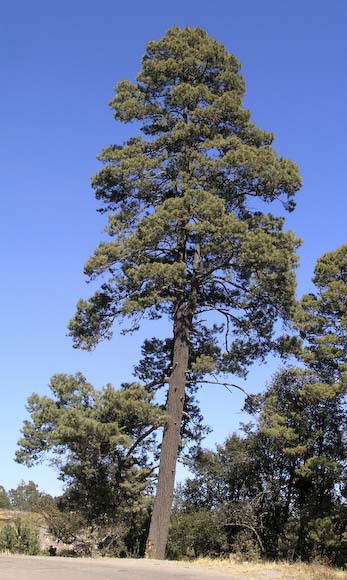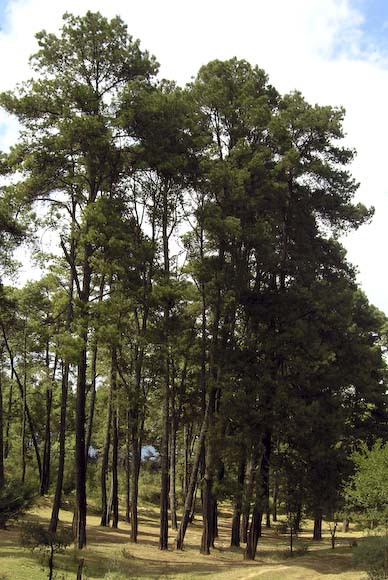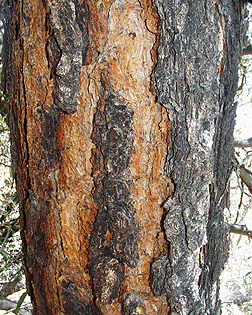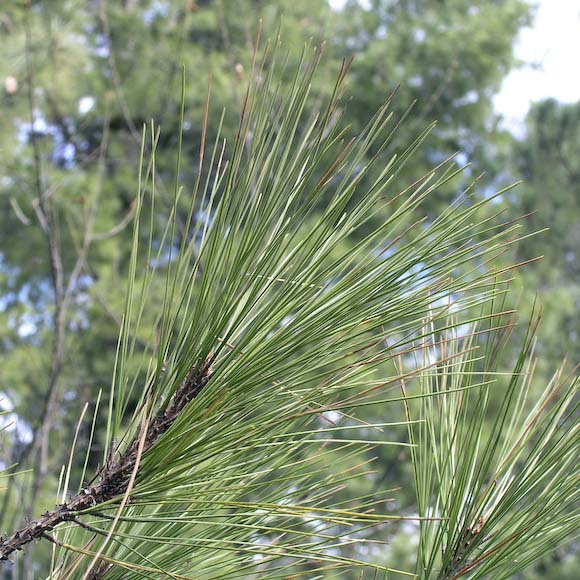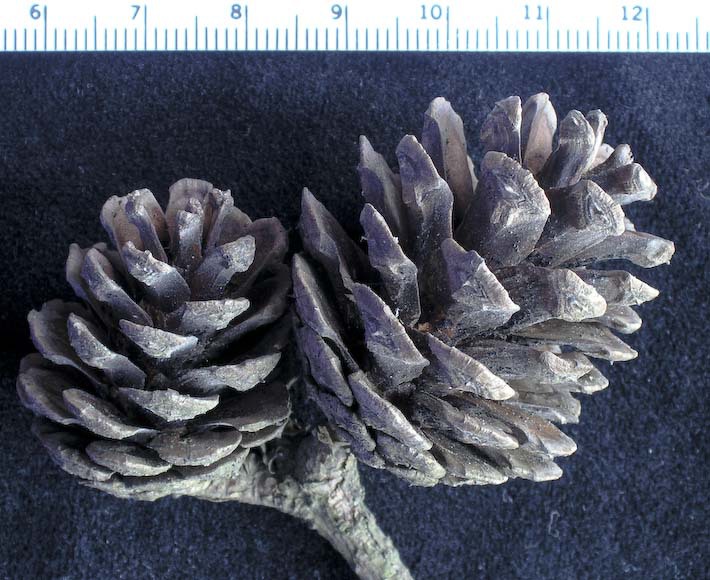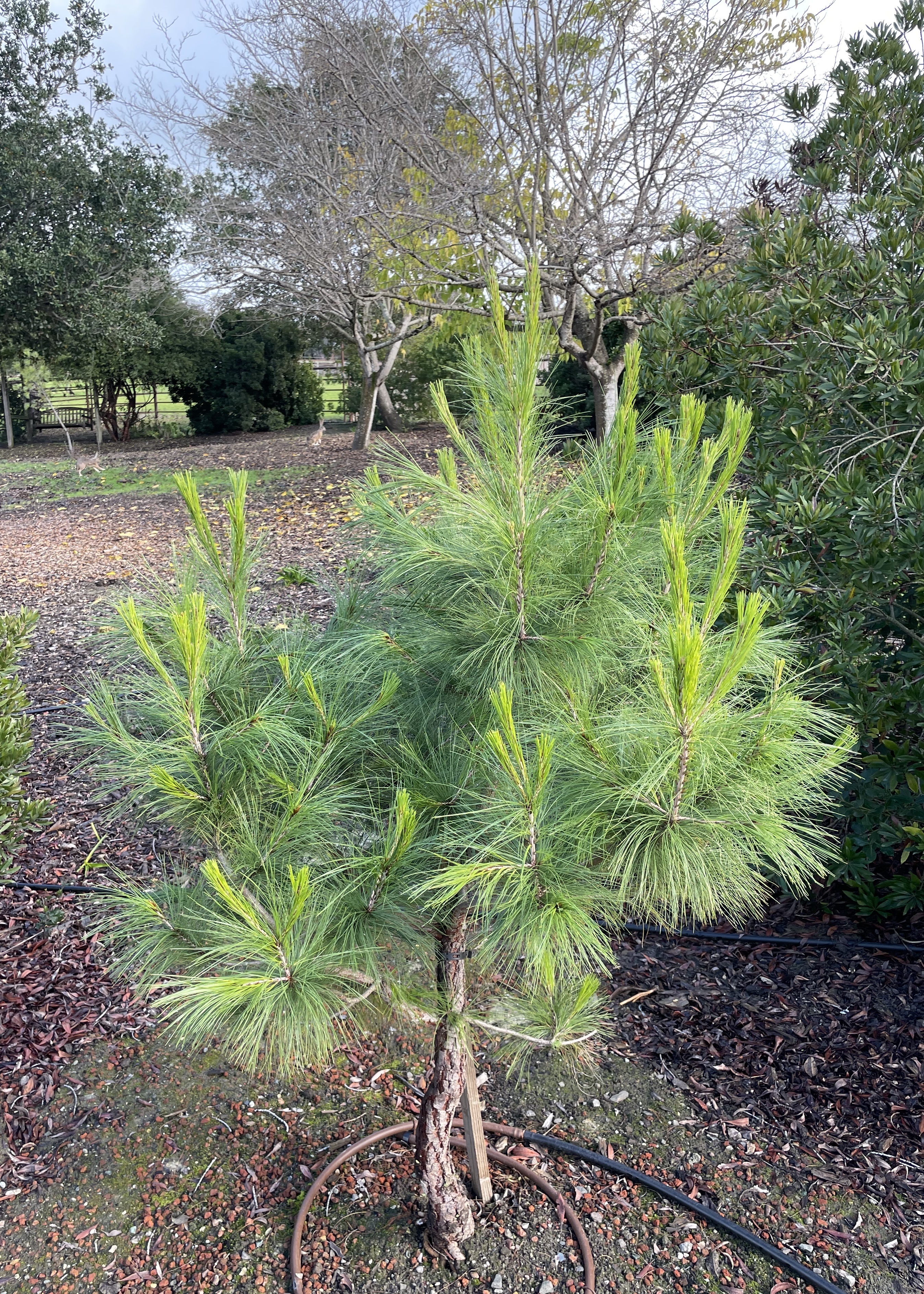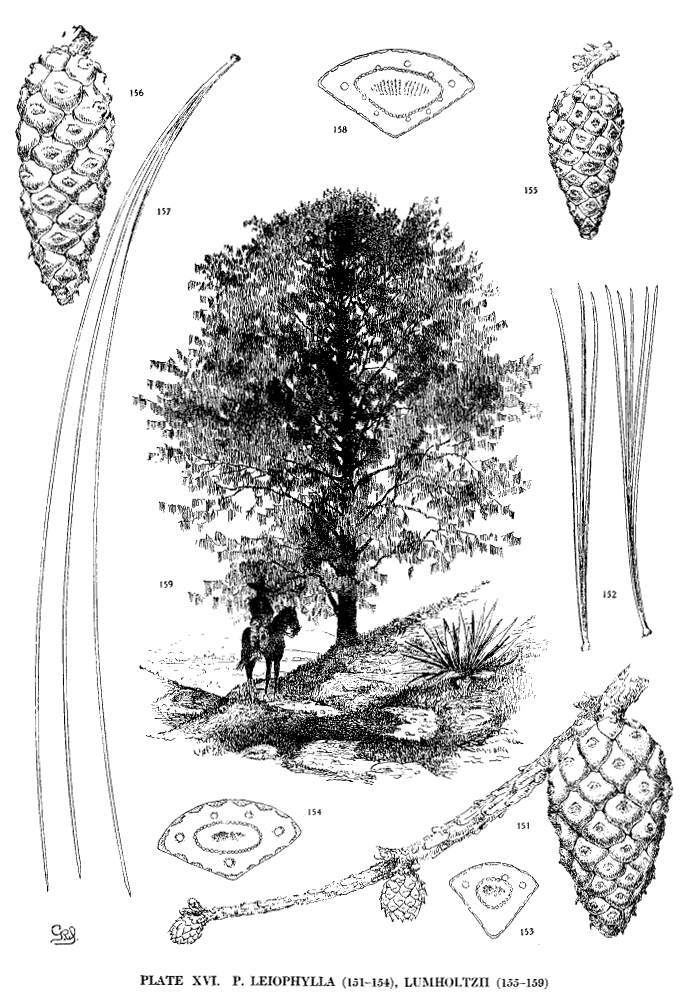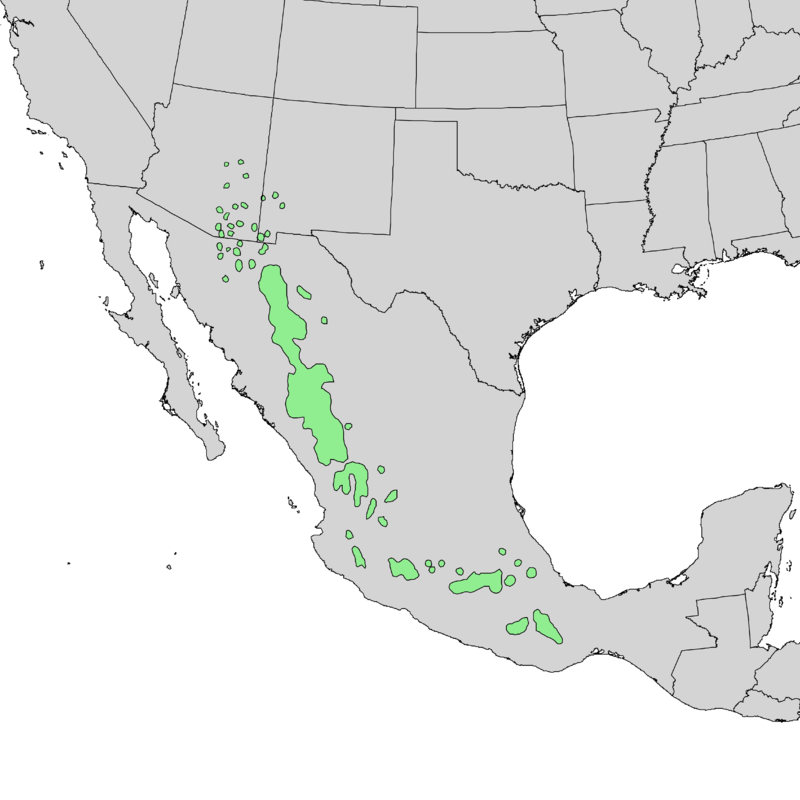subgenus Pinus, section Trifoliae (Duhamel), subsection Australes (Loudon).
Pinus leiophylla, first described in 1831 by Christian Julius Wilhelm Schiede (1798-1836) ex Diederich Franz Leonhard von Schlechtendal (1794-1866) et Adelbert von Chamisso (1781-1838), in Linnaea vol.6 is commonly known as Chihuahua pine, as well as pino chino in the Spanish language. The species name translates into "smooth leaf" in the Latin language.
Description. Chihuahua pine is an evergreen coniferous species of tree that grows to mature heights of 60 to 140 feet (15-35 m) with a single round trunk, 8 to 34 inches (20 - 85 cm) in diameter, measured at breast height; and an open, rounded crown, usually clear of branches for 60% of the tree's height.
- Bark is colored dark gray-brown, and is very thick, rough, scaly; divided into elongate, irregularly scaly plates with deep longitudinal fissures. On young trees and branches bark is more scaly, flaking, colored red-brown to gray-brown.
- Branches are long, slender, spreading or ascending, the lower ones curved downwards.
- Shoots are scaly with short, decurrent pulvini, colored red-brown or glaucous turning gray-brown with age.
- Fascicle sheaths measure 0.48 to 0.8 inch (12 - 20 mm) long with 5 to 6 early-deciduous scales, so that mature fascicles have no sheath.
- Leaves (needles) are borne in fascicles of generally 3 to 5 (sometimes 2 or 6), growing spreading in lax or rigid tufts near the ends of branches, persisting 2 to 3 years on the tree. Each needle measures 2.4 to 6 inches (6 - 15 cm) long by 0.02 to 0.052 inch (0.5 - 1.3 mm) thick, with minutely serrulate, margins, light green in color, with lines of stomata on all faces - 4 to 8 lines on the convex, abaxial face, and 3 to 4 lines on the adaxial face.
- Pollen cones are borne crowded near ends of shoots in a short dense cluster, each is cylindrical, measuring 0.4 to 0.6 inch (10 - 15 mm) long by 0.16 to 0.24 inch (4 - 6 mm) wide, colored yellow-pink maturing light brown.
- Seed cones are borne subterminal on shoots, growing solitary or in whorls of 2 to 5 on stout peduncles, 0.4 to 0.8 inch (10 - 20 mm) long, persisting on the tree for several years after maturing. Immature cones are ovoid to subglobose shaped, colored pink turning purple-green to purple-brown, maturing after three seasons, falling 2-3 years after maturity. Mature cones are nearly symmetrical, ovoid shaped, measuring 2 to 2.8 inches (5 - 7 cm) long by 1.6 to 2.2 inches (4 - 5.5 cm) wide when open.
- Seed scales number 50 to 70, arranged straight or recurved near the base of cone, colored purple-brown with lighter grey marks of seed wings. Apophysis is raised, transversely keeled, with rhombic outline, up to 0.6 inch (15 mm) wide, colored brown with the second season's growth showing as a narrow band around the umbo. Umbo is dorsal, pyramidal, with a blunt prickle, darker in color than the apophysis.
- Seeds are ovoid, 0.12 to 0.16 inch (3 - 4 mm) long, colored dark gray-brown with black spots. Seed wings are articulate, oval in shape, measuring 0.4 to 0.72 inch (10 - 18 mm) long by 0.16 to 0.32 inch (4 - 8 mm) wide, colored yellow-brown, and translucent.
Distribution. This species is native to Mexico - Sonora, Chihuahua, Durango, Nayarit, Zacatecas, Jalisco, Michoacán, México, Distrito Federal, Hidalgo, Morelos, Tlaxcala, Puebla, Veracruz, Guerrero, and Oaxaca. In USA - Arizona and New Mexico; growing at elevations of 5,000 to 11,000 feet (1,500 - 3,300 m) above sea level. From Zacatecas northward var. leiophylla is gradually replaced by var. chihuahuana. In the overlap zone, var. leiophylla is primarily a tree of maritime/warm/mesic sites west of the Sierra Madre Occidental crest, while var. chihuahuana is characteristic of continental/cold/xeric sites east of the crest.
The species pine forms pure stands, and is commonly associated with other pines including P. engelmannii, P. arizonica, P. teocote, P. lumholtzii, P. montezumae, P. ayacahuite, P. pseudostrobus (both vars.), P. devoniana, and P. patula, as well as Abies religiosa, A. guatemalensis, Juniperus sp., Arbutus sp., Quercus sp., and several hardwoods.
Hardy to USDA Zone 9 - cold hardiness limit between 20° and 30°F (-6.6° and -1.1°C).
